Mille-Feuille Nabe is one of the most popular hot pot recipes to cook at home in Japan. “A thousand layers“ of napa cabbage leaves and pork belly slices are beautifully packed and simmered in a warming dashi broth. It comes together quickly for a weeknight dinner or hot pot party that you will treasure during the cold-weather months.
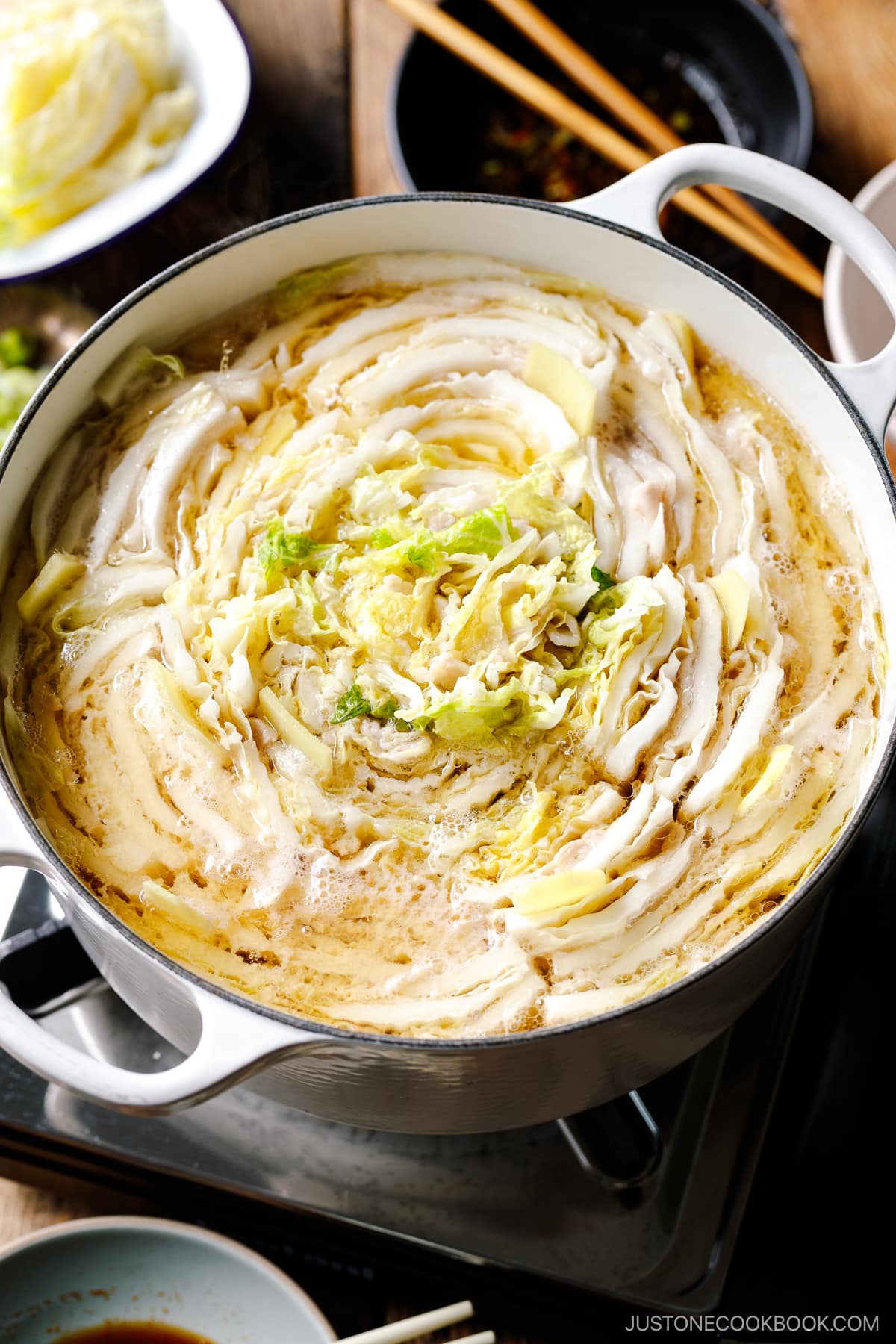
Mille-Feuille Nabe (ミルフィーユ鍋, 重ね鍋) is a simple Japanese hot pot that is made with napa cabbage and pork belly slices cooked in a savory dashi broth. Why is the French word “mille-feuille” used in a Japanese dish? Well, let me introduce this easy and delicious hot pot dish to you and explain the story behind the name.
Table of Contents
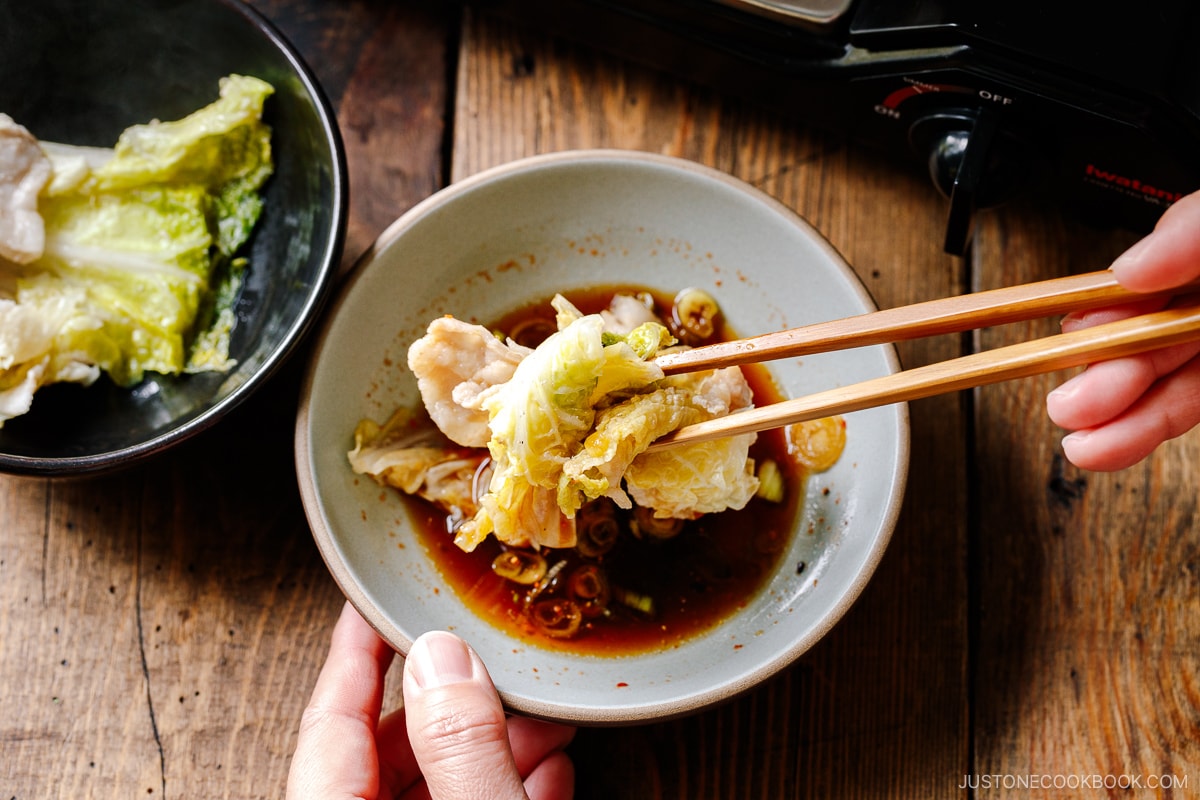
What is Mille-Feuille Nabe?
In French, ‘Mille-feuille’ means ‘a thousand leaves’ and typically refers to the classic French pastry consisting of three layers of thin puff pastry with two layers of cream filling, topped with powdered sugar. This dessert is sometimes also called ‘Napoleon.

So, ‘Mille-Feuille’ in this recipe refers to the ‘thousand layers’ of cabbage leaves and pork belly slices, and ‘Nabe’ means a hot pot dish in Japanese.
There are about three theories about how ‘Mille-Feuille Nabe’ was introduced to Japan. The recipe first appeared in a cookbook back in 1991, and since then, it has become one of the most popular hot pot recipes enjoyed at home in Japan.
Mille-Feuille Nabe is visually appealing, and the best part about this hot pot is that it requires just a few ingredients compared to Shabu Shabu or Sukiyaki, yet it tastes equally delicious!
It’s also a great menu option for parties during the cold months. You can prepare everything ahead of time and cook the hot pot right after your guests arrive.
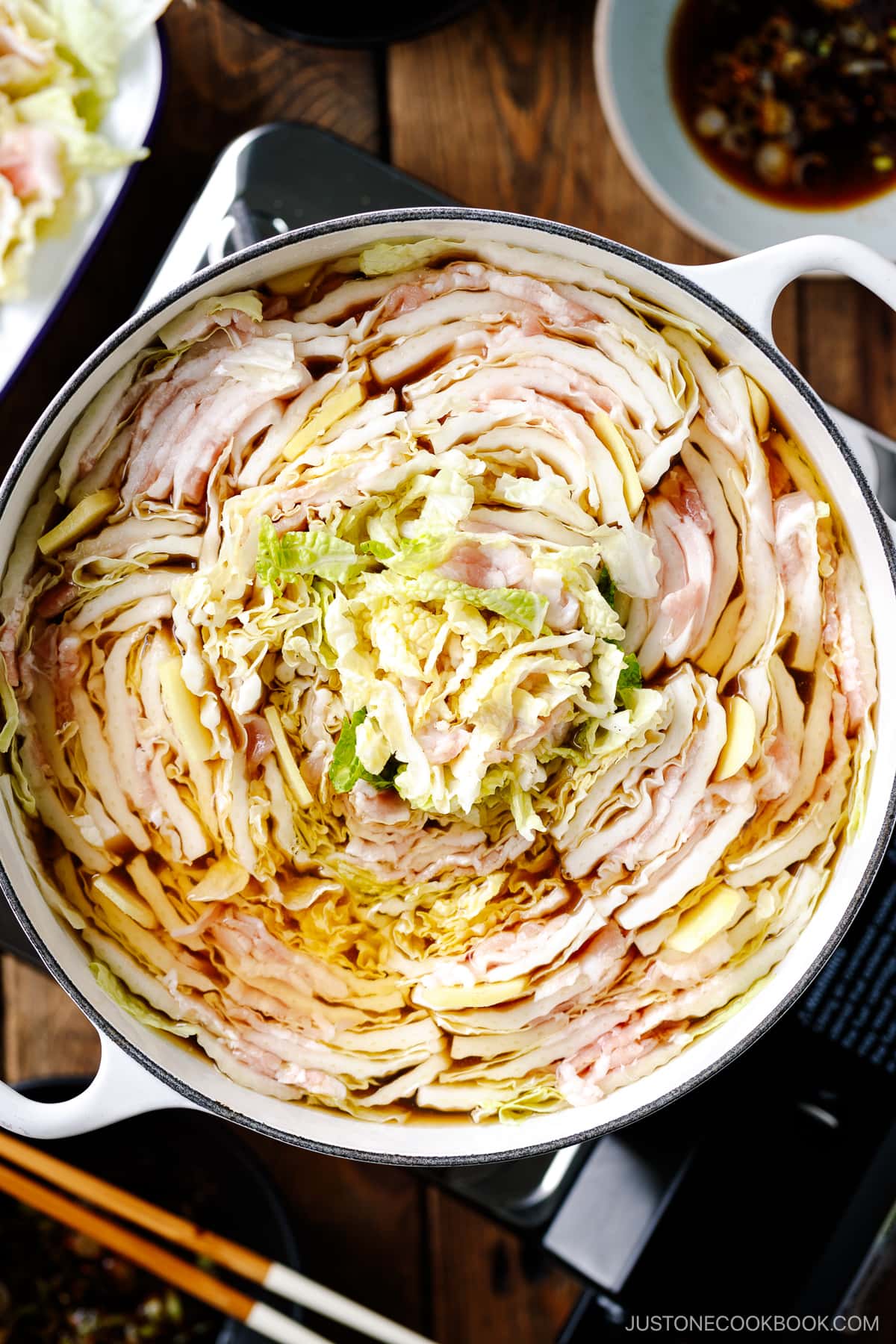
How to Make Mille-Feuille Nabe
The Ingredients You’ll Need
You can create the layers and soup base with any ingredients you prefer, but the basic and authentic Mille-Feuille Nabe always includes napa cabbage and pork belly slices.
- Napa cabbage
- Pork belly slices
- Ginger
- Dashi (Japanese soup stock)
- Seasonings: soy sauce, sake, and salt
Since pork belly is the fattier part of the meat, a simple dashi broth is a perfect match for this dish. The flavors from the meat, napa cabbage, and broth come together beautifully to create an amazing umami flavor. It’s incredible how these simple ingredients can combine to offer such a harmonious taste!
Jump to RecipeThe Cooking Steps
- Prepare the soup broth and layer the pork belly slices between the napa cabbage leaves.
- Cut each napa cabbage wedge into 4 pieces, each about 2 to 2½ inches (5-6 cm) long.
- Start packing the ingredients in a pot, working your way toward the center from the outer edges. Ensure that the pot is tightly packed, as the layers may loosen during cooking.
- Pour the broth into the pot with the napa cabbage and pork belly. Cook over medium-high heat for 8-10 minutes until the napa cabbage is tender and the pork is cooked through.
- Enjoy the Mille-Feuille Nabe by dipping the cooked food in ponzu sauce.
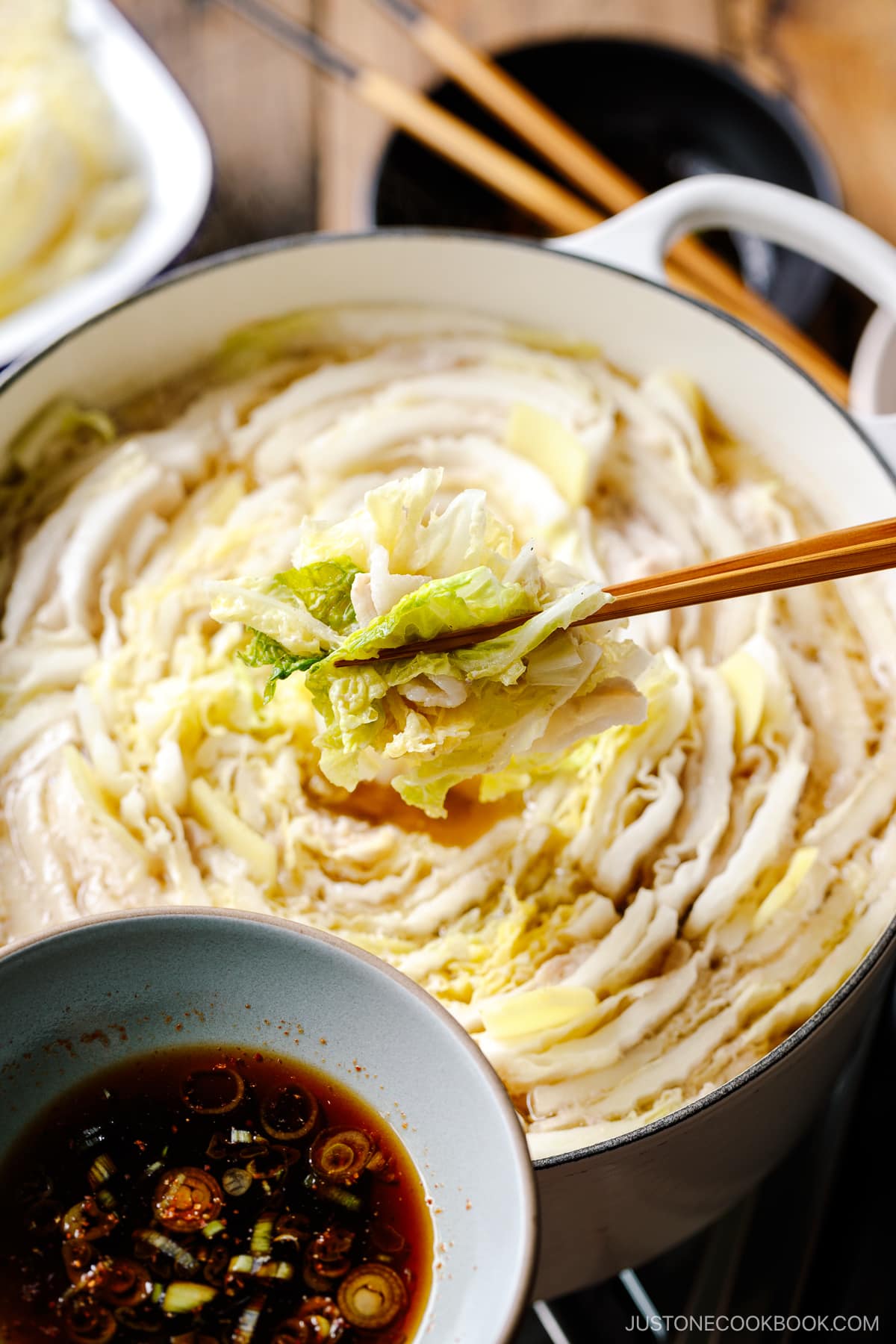
Cooking Tips
The important tips are all related to the assembly of the pot.
- Pack the layers tightly! The key to making this nabe is ensuring the layers are tightly packed in the pot. Napa cabbage releases water and shrinks as it cooks, causing the layers to loosen. Therefore, before you start cooking, make sure the layers are tightly packed, preventing the ingredients from moving around.
- Start by packing from the outer edges of the pot and work your way toward the center. I usually place the thicker cabbage leaves near the pot’s edge and the tender leaves in the center. This arrangement allows you to use a ‘backup plan’ if you run out of napa cabbage before filling the pot.
- Use one hand to hold the layers in the pot and the other hand to add more layers. Don’t worry if the layers become a bit loose; you can adjust them by bunching them up against each other as you continue to add more.
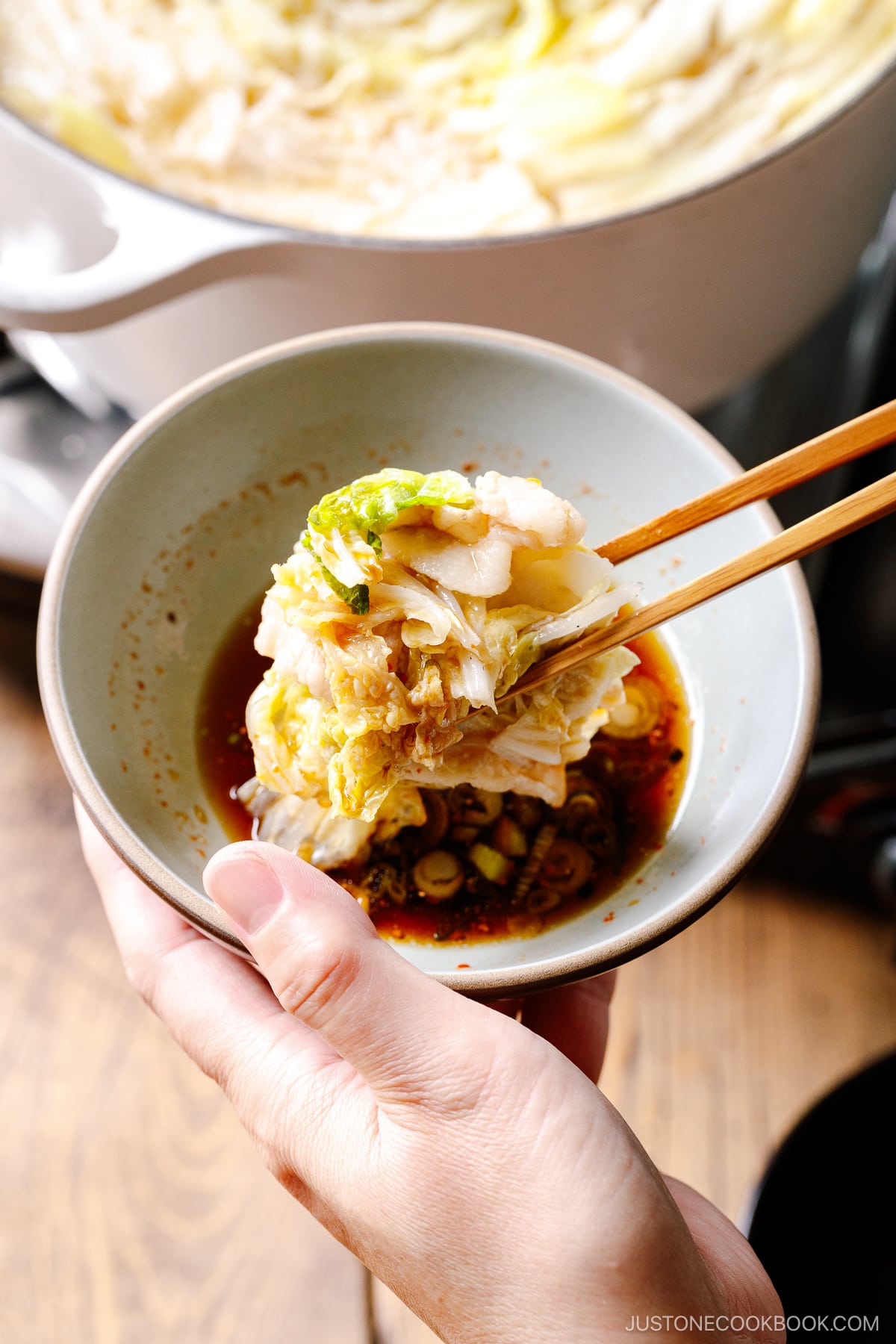
When Running out of Napa Cabbage
The goal is to fill the pot with layers all the way to the center. However, if you’re making this dish for the first time, estimating the amount of napa cabbage you’ll need can be challenging.
For that reason, I recommend having shimeji mushrooms or enoki mushrooms as a backup filler. In case you run out of napa cabbage and pork belly layers, you can use these mushrooms to fill the empty space in the center. Since they have a more neutral taste, they won’t significantly affect the dish’s flavors.
Once you become more experienced with making this dish, you can experiment with additional ingredients, but let’s stick with the basics for today.
Ingredient Substitutions
JOC readers who don’t eat pork have tried this recipe with thinly sliced beef and they loved it. Just a quick reminder that beef tends to release more scum as you cook, so be ready to skim off the scum with a fine-mesh sieve.
Vegetarian and vegan readers have also tried this recipe with thinly sliced vegetables with Vegan Dashi. I’ve seen the colorful vegetable Mille-Feuille Nabe pictures they shared on social media and it was impressive!
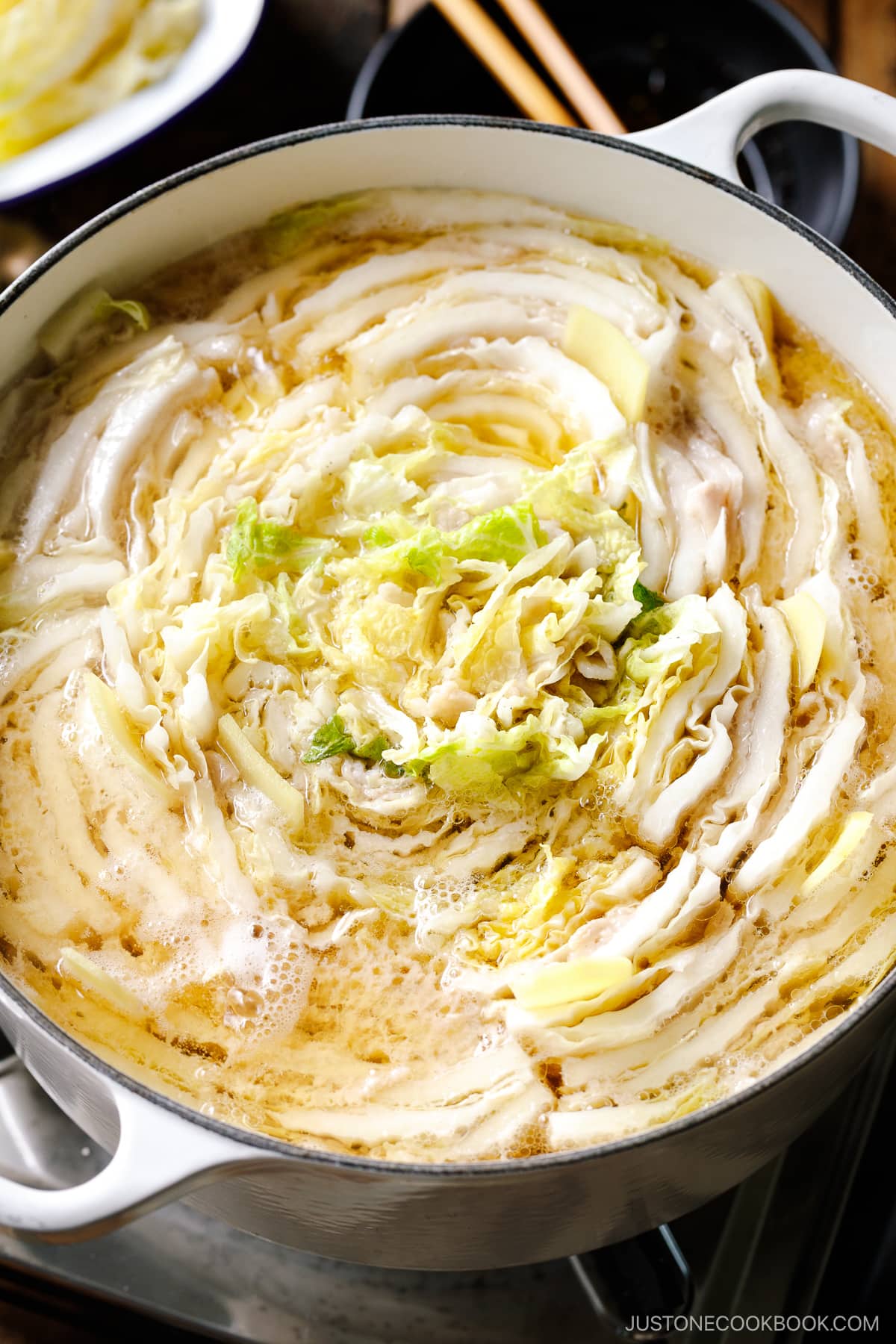
“Shime” – The Finale of the Hot Pot
Toward the end of the hot pot, when most of the ingredients have been consumed, you’re left with the umami-packed soup. Don’t discard it!
You can enjoy the remaining soup with one serving of steamed rice or noodles. This final dish is known as ‘shime’ (〆, しめ) in Japanese.
Mr. JOC likes adding chuka soba (ramen noodles), but my kids prefer adding udon noodles to the soup. I enjoy adding rice to the soup to make Zosui (Japanese Rice Soup). As the rice absorbs the broth, drizzle in beaten egg, cover, and cook for a few minutes. Season with salt and ground white pepper, and sprinkle with some chopped green onion. It’s simple yet so delicious!
Even when you’re full, don’t miss the hot pot’s finale; you can enjoy a small portion at the end.
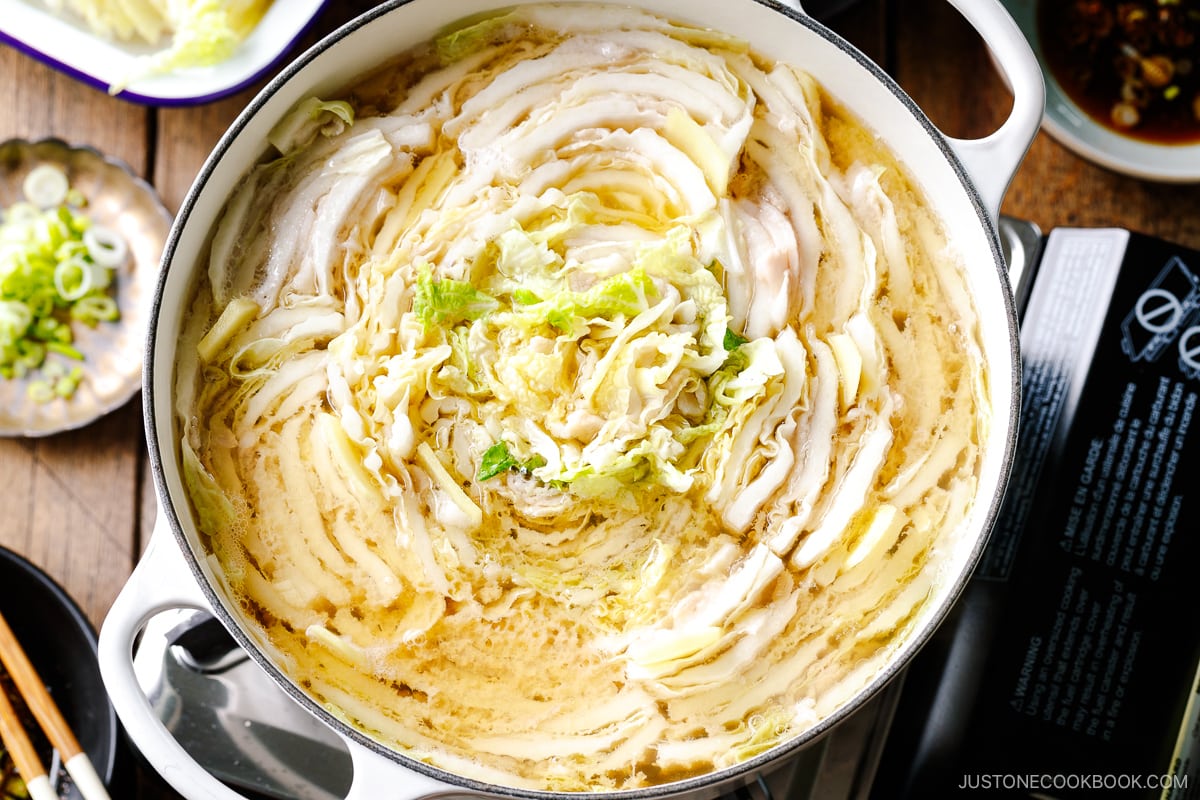
Wish to learn more about Japanese cooking? Sign up for our free newsletter to receive cooking tips & recipe updates! And stay in touch with me on Facebook, Pinterest, YouTube, and Instagram.
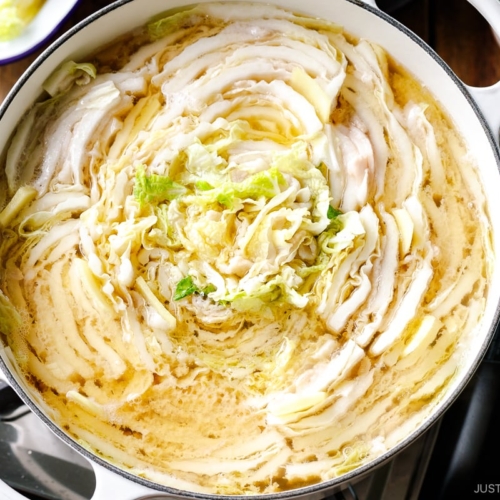
Mille-Feuille Nabe
Video
Ingredients
- 1 head napa cabbage (4 lbs, 1.8 kg)
- 1½ lb sliced pork belly (or slice your own pork belly; see Notes for where to buy; do not use bacon, since it‘s too salty for this dish)
For the Broth
- 8-10 slices ginger (peeled and thinly sliced from a 1-inch, 2.5-cm knob)
- 5 cups dashi (Japanese soup stock) (use standard Awase Dashi, dashi packet or powder, or Vegan Dashi)
- 2 Tbsp sake
- 1 Tbsp soy sauce
- ½ tsp Diamond Crystal kosher salt
For the Dipping Sauce
- 1 green onion/scallion
- ponzu
- shichimi togarashi (Japanese seven spice) (optional, for a spicy kick)
Instructions
- Before You Start: If you haven‘t made 5 cups dashi (Japanese soup stock) yet, here‘s a quick version using my favorite dashi packet. First, add 2 dashi packets to 5 cups water in a saucepan. Start cooking over medium heat. When it reaches a boil, reduce the heat to medium low and simmer for 2–3 minutes. Turn off the heat. Remove the packets from the saucepan, shake them a few times to release more flavor, then discard them. The dashi is now ready to use.

- Gather all the ingredients.

To Prepare the Ingredients
- To make the soup broth, combine 5 cups dashi (Japanese soup stock), 2 Tbsp sake, 1 Tbsp soy sauce, and ½ tsp Diamond Crystal kosher salt in a measuring cup or mixing bowl. Don’t reduce the salt since the napa cabbage will release liquid during cooking and dilute the soup.

- Peel and thinly slice the ginger knob into 8-10 slices ginger and set it aside.

- Thinly cut 1 green onion/scallion. Put the green onion in a small serving bowl to add later to the dipping sauce.

- Cut 1 head napa cabbage lengthwise into quarters. I like to cut just the white bottom half of the napa cabbage head with a sharp knife, then pull apart the leafy top half with my hands. By tearing the leaves naturally, you lose fewer leaves compared to slicing. DO NOT cut off the core from the 4 wedges yet. The core keeps the leaves attached at the root end and makes layering the pork belly much easier.

- Carefully wash the leaves without detaching them from the core. Drain well. Don’t throw away any leaves that naturally come off while rinsing. We’ll use them later on.

To Make the Layers
- Layer 1½ lb sliced pork belly into the napa cabbage wedges by placing one pork belly slice between each of the leaves. If the pork belly is longer than the cabbage wedge, trim the pork with kitchen shears and layer it in other parts of the cabbage. If you have extra pork belly, put an additional slice in the outer layers that have wide leaves.

- Once you‘ve tucked in the pork belly slices, carefully cut off the hard cabbage cores without disturbing the layers. Cut each wedge into 4 pieces that are each about 2 to 2½ inches (5–6 cm) long, keeping the layers of cabbage and pork neatly stacked as you slice.

To Pack the Pot
- Next, start packing the ingredients in a donabe or regular 10-inch pot (I used a 4.5 QT Le Creuset pot; if you‘re doubling the recipe, use two 10-inch pots or one larger pot). Start from the edge of the pot and work your way toward the center. Turn the stacks on their side so the pink and green layers are visible. Position the layers parallel to the pot‘s side so they eventually form concentric circles once the pot is packed.

- I usually place the thicker cabbage leaves near the edge of the pot and the tender leaves in the center. Make sure to pack the pot tightly as the layers will become loose during cooking.

- If you don’t have enough layers to pack the pot tightly, consider using a smaller pot or place other ingredients in the center. Here, I stuffed the center with the napa cabbage leaves that came off when I cut and rinsed the cabbage. You can also put enoki mushrooms or shimeji mushrooms in the center.

- If you have extra layers, hold them in a deep baking dish or a container with a tall rim. You can add them to the pot later after you‘ve remove most of the cooked layers.

- Insert the thinly sliced ginger between the layers.

- Pour the soup broth into the pot with the cabbage and pork layers. If you are cooking at the table, bring the pot to the table. Otherwise, you can start cooking on the stove.

To Set up the Table
- At each place setting, prepare a medium bowl and a small bowl for each person. To cook at the table, set it up a portable gas stove and place the pot on it.For the dipping sauce, add ponzu, the chopped green onion/scallion, and optional shichimi togarashi (Japanese seven spice) to the small individual bowls.

To Cook and Serve
- Start cooking, covered, on medium-high heat. Once boiling, skim off the foam and fat on the surface using a fine-mesh skimmer. Then, reduce the heat to medium low and cook covered until the napa cabbage is tender and the pork belly is cooked through, roughly 8–10 minutes. When the Mille-Feuille Nabe is cooked through, serve it hot. Dip in the ponzu sauce and enjoy!

To Store
- You can keep the leftovers in an airtight container and store in the refrigerator for up to 3 days or in the freezer for a month.
Notes
Nutrition
Editor’s Note: This post was originally published on January 6, 2016. It’s been republished with a new video, new images, and updated content on November 10, 2023.
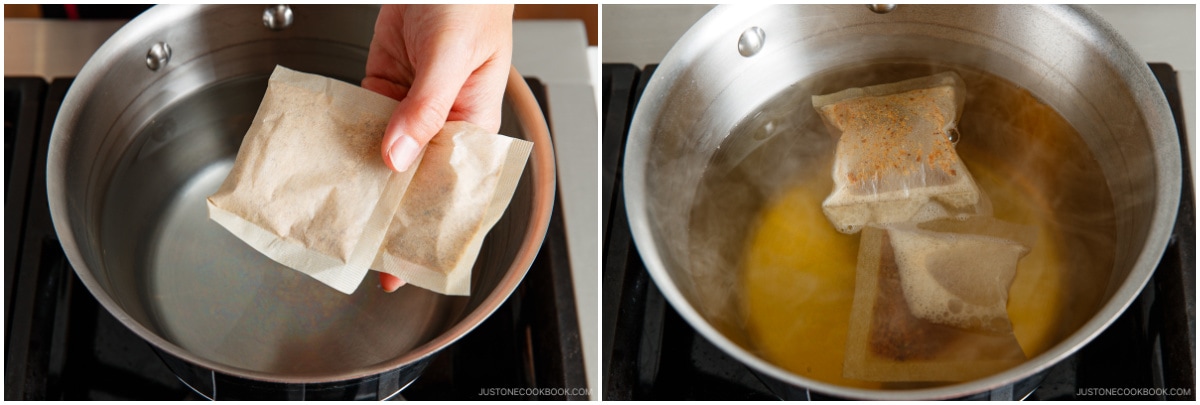
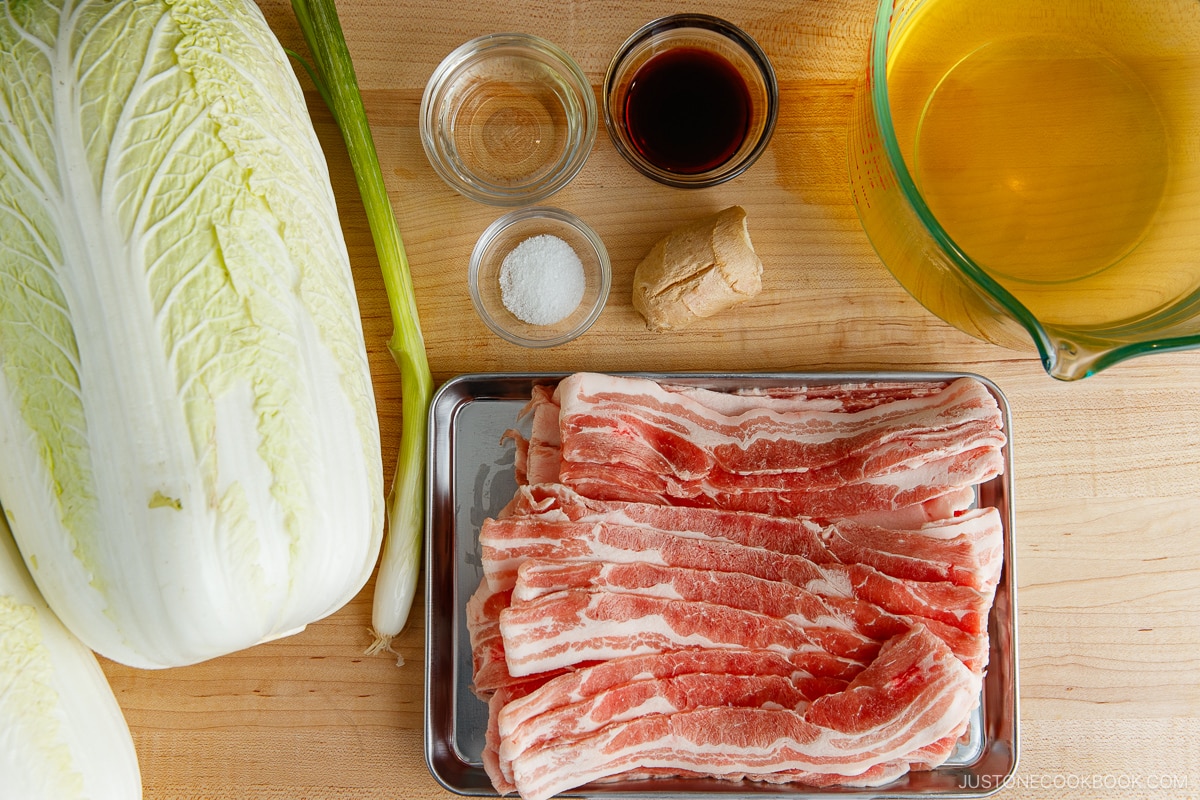
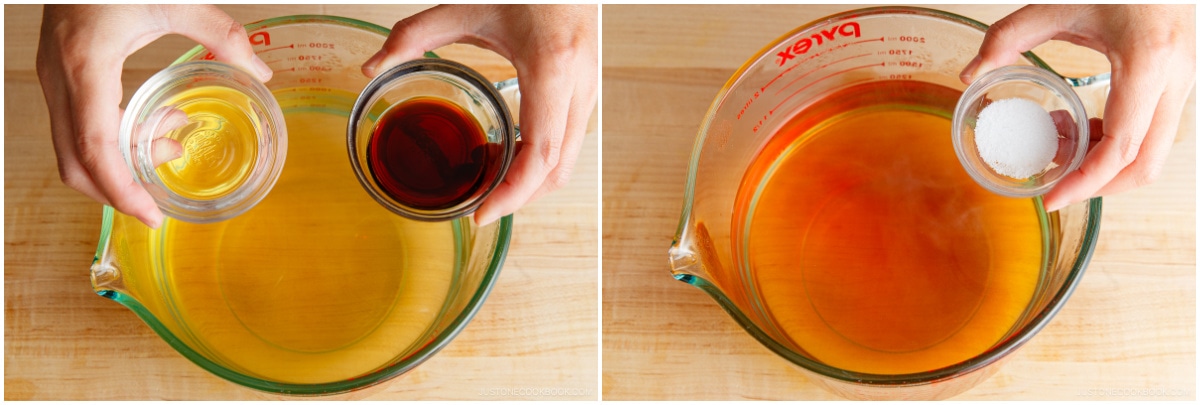
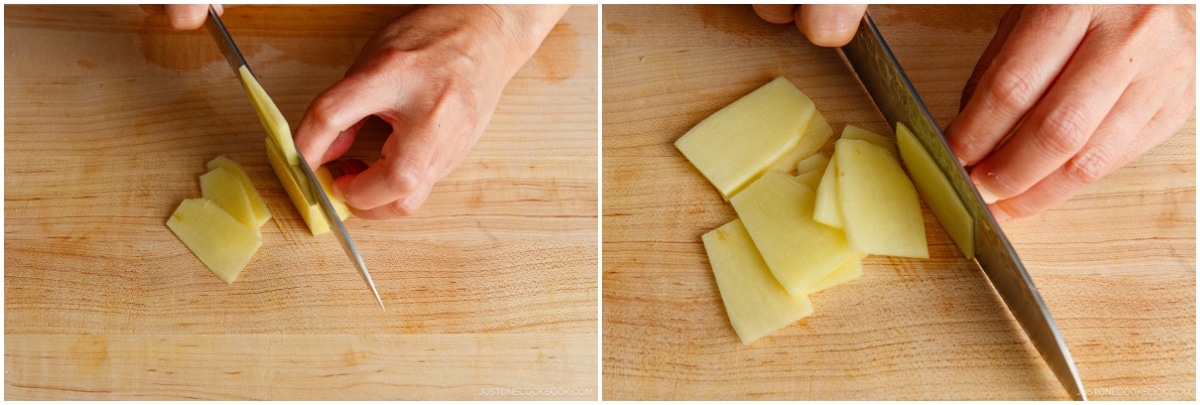
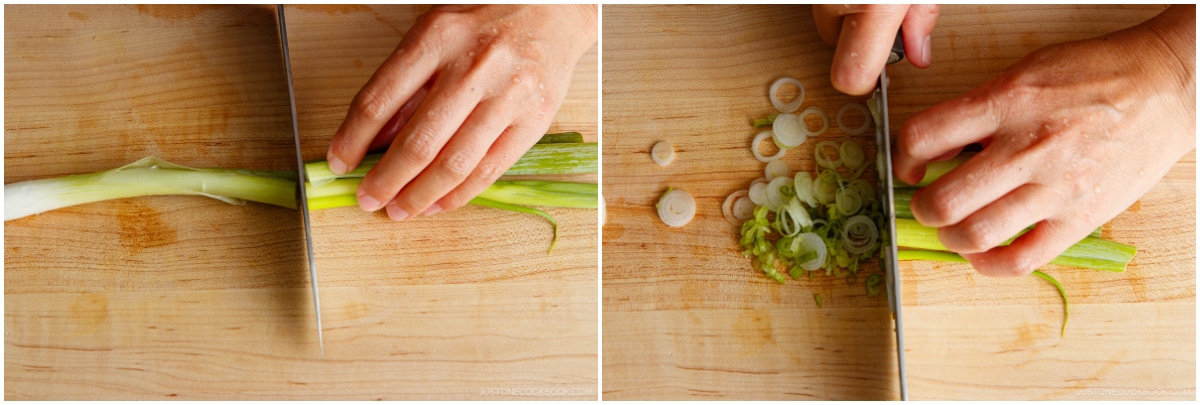
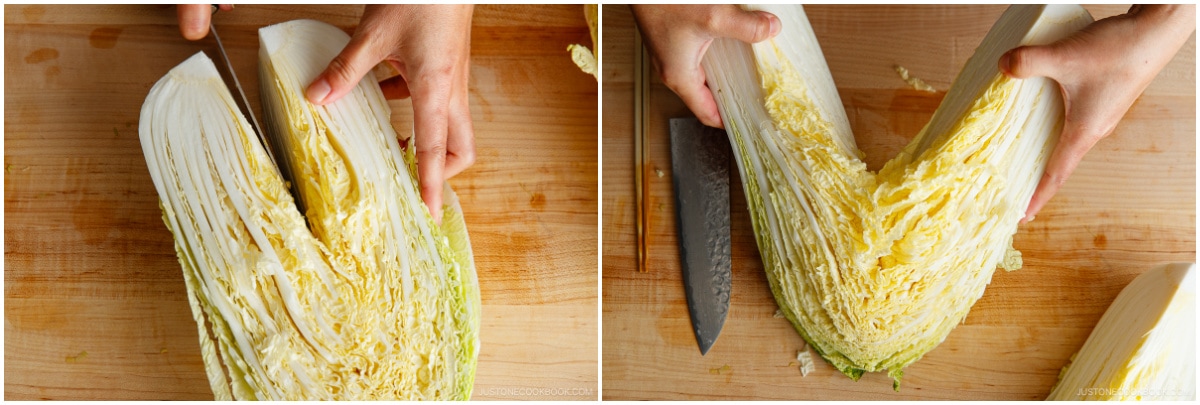
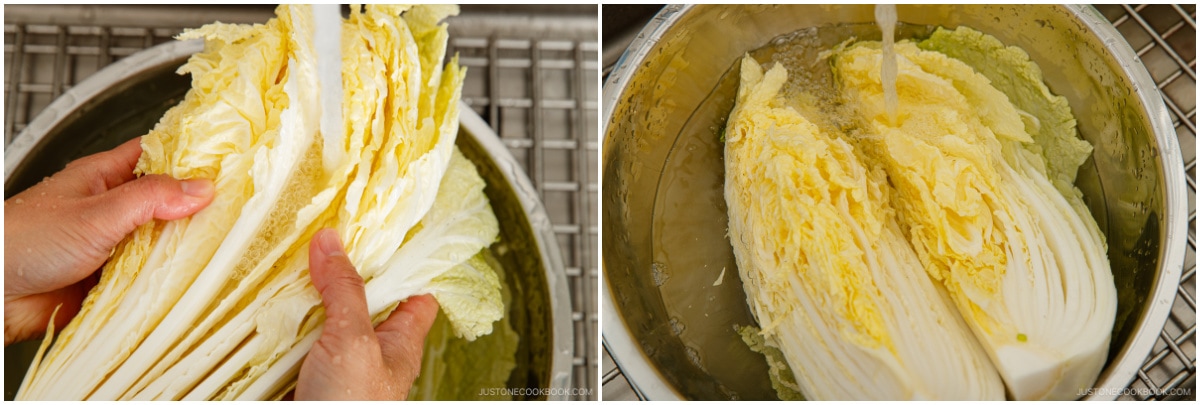
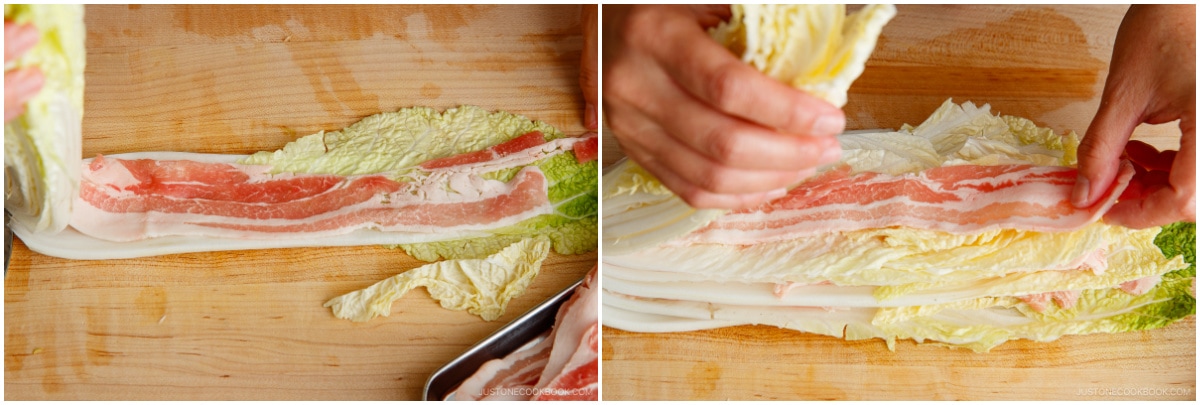
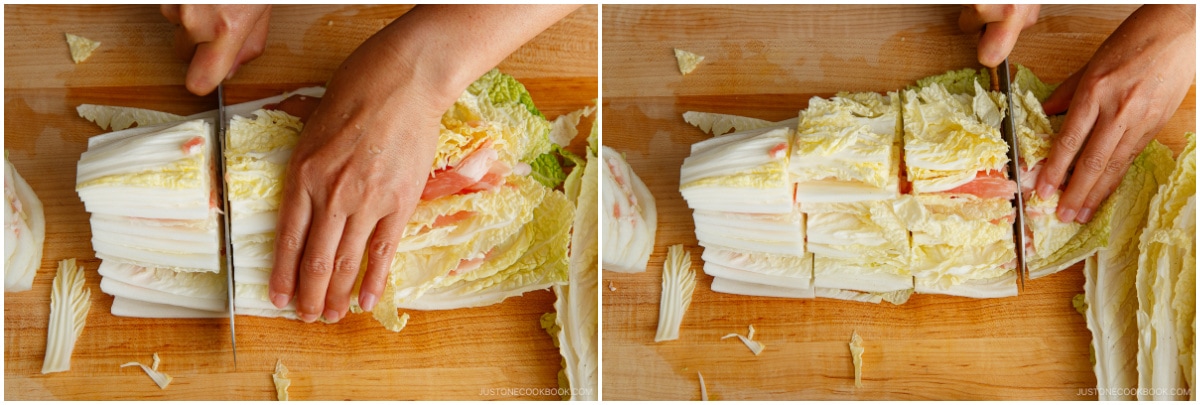
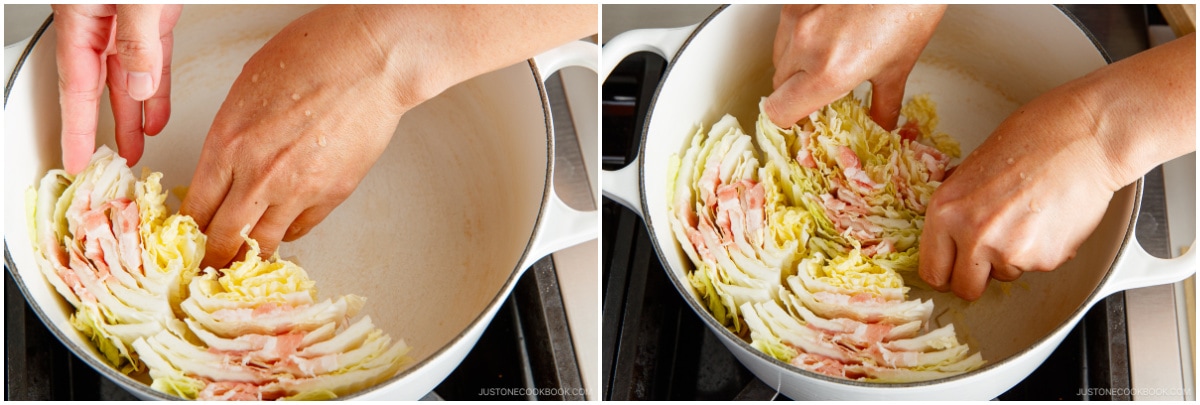
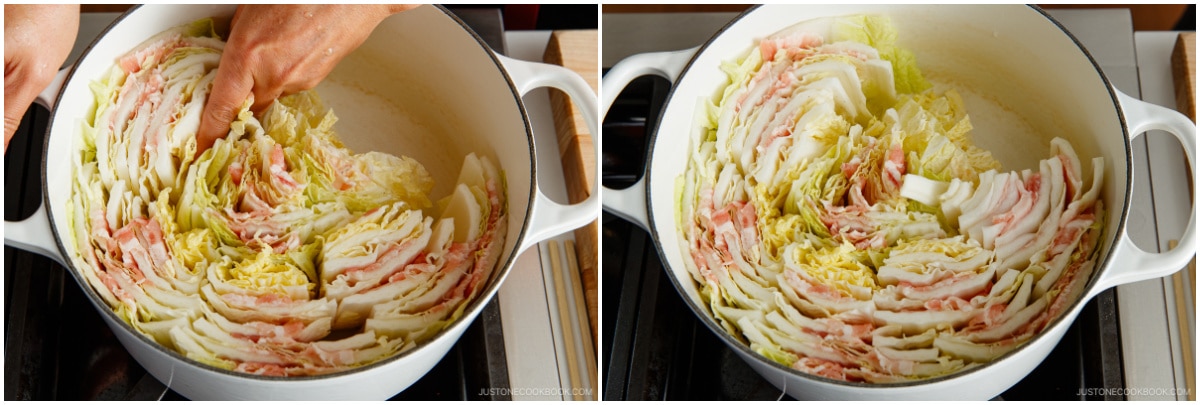
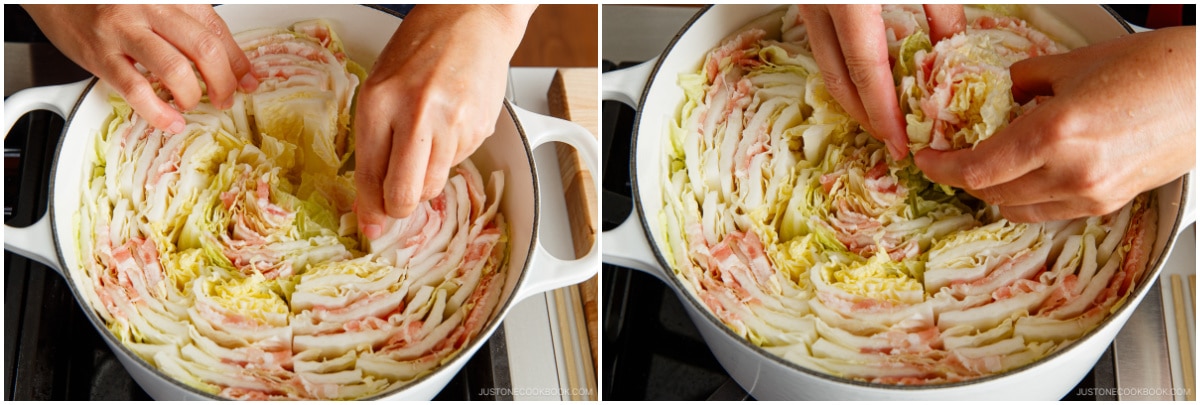
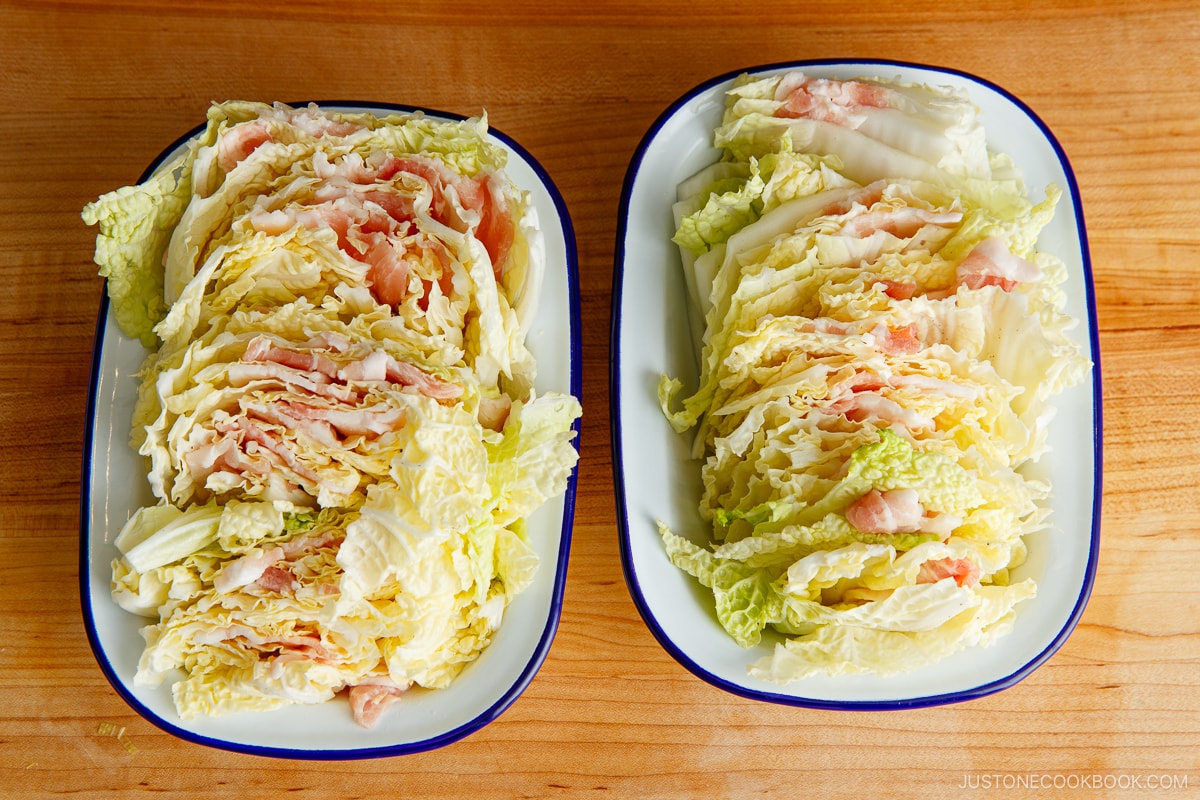
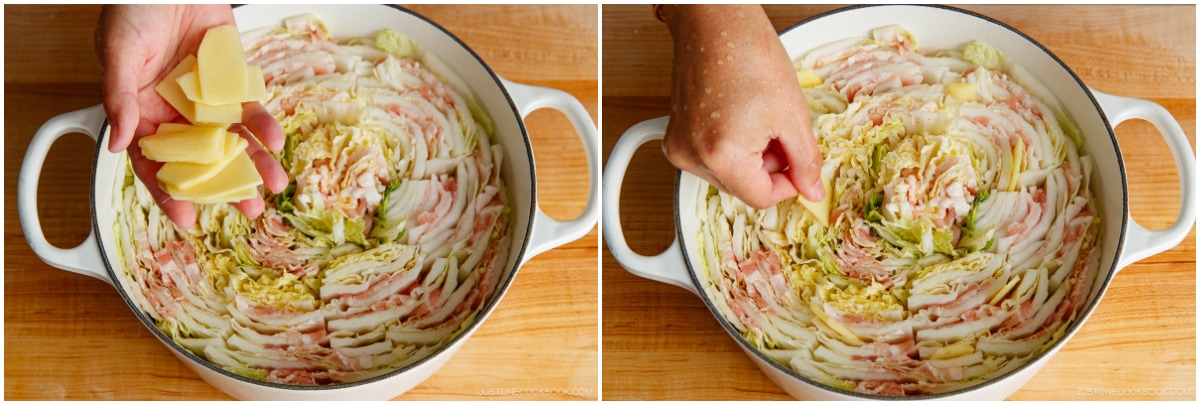
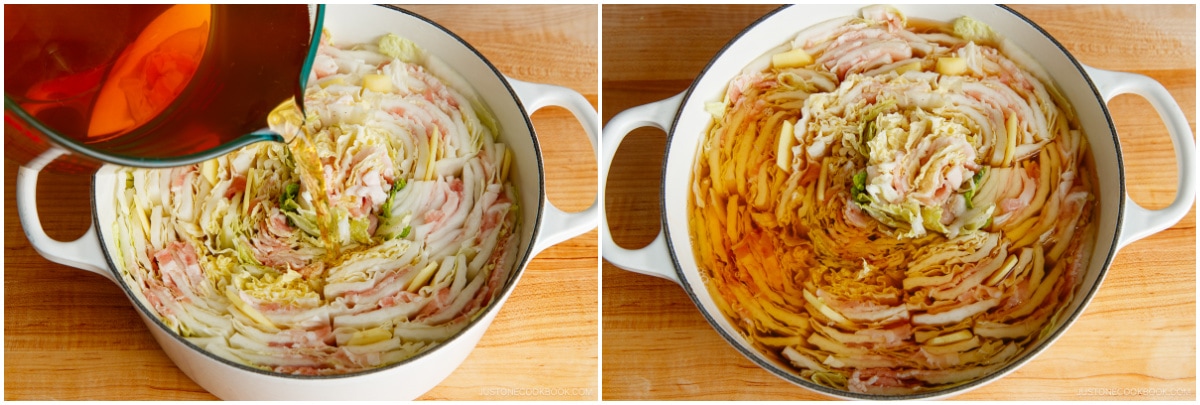
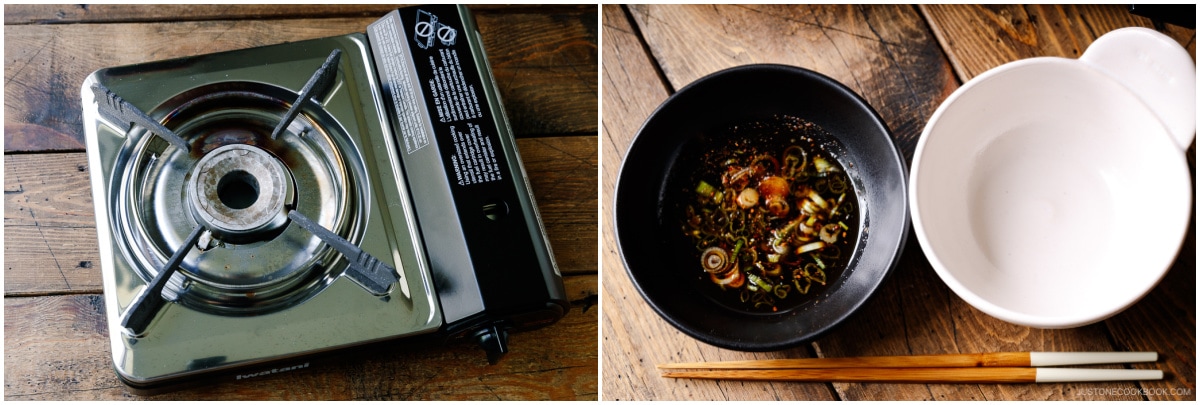
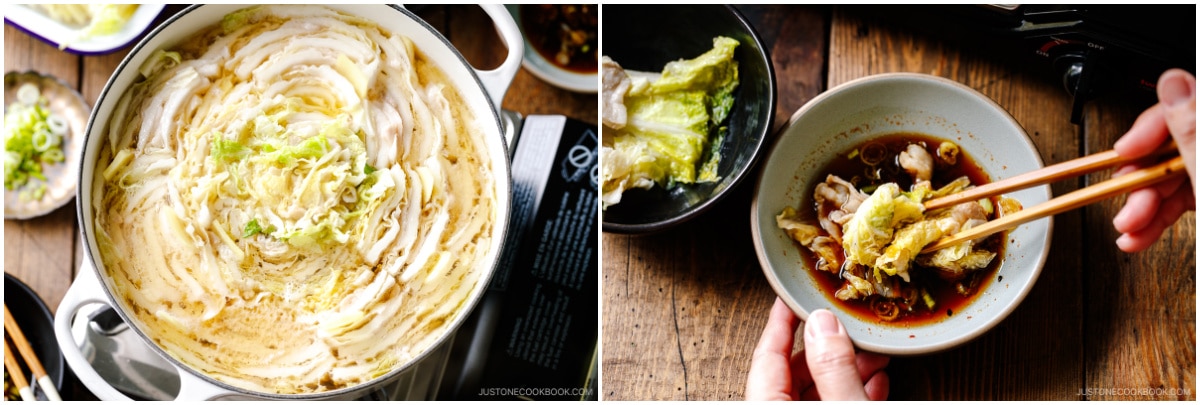











I would like to make this, but I was wondering which type of dashi you used for this dish( I know there is katsuo and kombu.)? Thanks for sharing authentic recipes with us.
Hi, Elizabeth! Thank you for trying Nami’s recipe.
Nami uses Awase dashi (a combination of Kombu and Katsuobushi) in this dish, but it can also be vegan dashi. There is a link in the ingredient list for more information.
We hope this helped!
Absolutely beautiful recipe!
First time making and tasting. I’ll definitely make again. It was a labour of love slicing the pork myself. Next time I’ll buy the sliced ones from the Asian store.
The flavours were clean and subtle and the pork was tender.
Hi, Louise! We’re so glad you loved Nami’s recipe!
Most Asian supermarkets sell great sliced meat, so we hope you can find them.🙂
Thank you for your feedback and for reviewing the recipe. Happy cooking!
love this recipe
Hi, Amy! Thank you for trying Nami’s recipe and providing a rating!
We truly appreciate your kind feedback.🥰
Happy cooking!
This was awesome! I’m not a hotpot fan generally, but I made this because my kids love hotpot. It was simple to make. I couldn’t find thinly sliced pork belly, so we substituted with other thinly sliced pork and it came out fine. The broth was delicious!
Hi Connie! Thank you so much for trying Nami’s recipe and sharing your feedback with us!
We are so happy to hear you enjoyed Hotpot! We hope you will try other Hotopot dishes as well.
Happy Cooking!🤗
https://www.justonecookbook.com/tags/hot-pot/